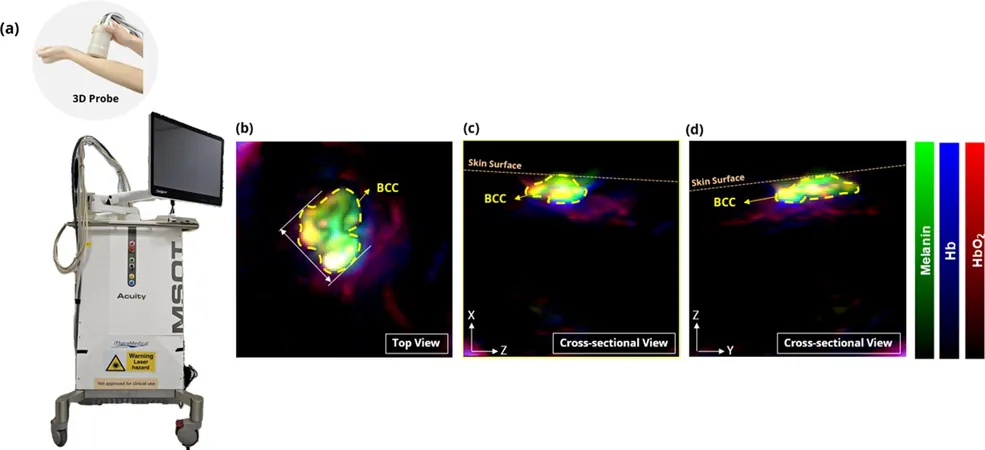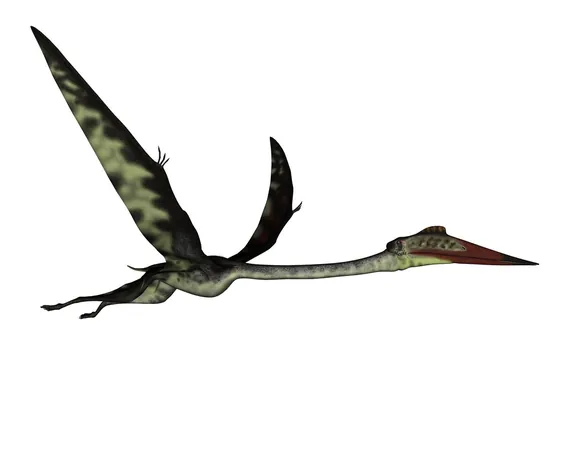
Groundbreaking Noninvasive 3D Imaging Technique Set to Transform Skin Cancer Treatment
2025-04-07
Author: Jia
In a groundbreaking development, researchers from Singapore's Agency for Science, Technology and Research (A*STAR) and the National Healthcare Group (NHG) have unveiled a revolutionary imaging method that combines Multispectral Optoacoustic Tomography (MSOT) with artificial intelligence (AI). This innovative approach is poised to significantly enhance the diagnosis and management of basal cell carcinoma (BCC), the most prevalent type of skin cancer globally.
This state-of-the-art technique leverages photoacoustic imaging (PAI), augmented by an automated segmentation algorithm, to yield real-time, high-resolution, three-dimensional images of skin tumors. By accurately outlining tumor borders, this cutting-edge technology equips physicians to plan surgeries with unparalleled precision, thereby minimizing the likelihood of repeated procedures and improving overall patient outcomes.
A Transformation in Skin Cancer Diagnosis in Singapore
BCC cases are escalating in Singapore, particularly among the aging population, making effective treatment crucial. Traditional diagnostic methods such as biopsies and Mohs micrographic surgery can often be uncomfortable and lengthy, necessitating multiple procedures to ascertain tumor extent and ensure complete excision.
To counter these issues, scientists from A*STAR Skin Research Labs and NHG's National Skin Center have embarked on a clinical study featuring their pioneering technique. This study integrates an advanced segmentation algorithm with PAI, enabling automated identification of skin tumor shapes and sizes. This innovation minimizes the need for manual data interpretation and accelerates the diagnostic process, making it less burdensome for patients.
The novel imaging technology captures intricate 3D representations of tumors, complete with measurements of width, depth, and volume, penetrating deeper layers of skin than conventional methods can achieve. By providing clearer insights into tumor margins, the system enables more precise surgical planning, aiming to reduce the need for supplementary surgeries and enhance recovery experiences for patients.
Promising Early Results and Future Aspirations
Currently under evaluation at the National Skin Center, eight patients have participated in a pilot study, utilizing MSOT for tumor scans prior to surgery. Early findings demonstrate a notable correlation between the results produced by this new imaging method and those derived from established diagnostic techniques for skin cancer.
“The initial results are highly encouraging, showcasing strong alignment with the current diagnostic standards. Our next step is to transition this technology toward practical clinical settings to greatly benefit patients battling skin cancer,” stated Prof. Malini Olivo, esteemed principal scientist and co-author of the study, along with Assoc. Prof. U.S. Dinish, principal investigator at A*STAR SRL.
While the initial focus of the study is on BCC, researchers are enthusiastic about the possibility of adapting this technology for the detection of various other skin cancer types prevalent in Singapore and surrounding areas.
“The National Healthcare Group is continually seeking innovative ways to transform patient care. We are proud that our National Skin Center is the first facility in the region to employ reflectance confocal microscopy as an alternative diagnostic tool, replacing traditional biopsy methods. Our goal is to tailor surgical interventions to individual patient needs, ultimately reducing mortality and enhancing the quality of life for those affected by skin cancer,” remarked Prof. Steven Thng, deputy director and senior consultant at the National Skin Center, NHG, and co-author of the study.
This groundbreaking technology offers immense potential not just within Singapore but could also set a precedent for skin cancer care globally, necessitating closer observation as it progresses through clinical applications. The future of skin cancer diagnosis and treatment is indeed on the horizon, promising hope for millions.




 Brasil (PT)
Brasil (PT)
 Canada (EN)
Canada (EN)
 Chile (ES)
Chile (ES)
 Česko (CS)
Česko (CS)
 대한민국 (KO)
대한민국 (KO)
 España (ES)
España (ES)
 France (FR)
France (FR)
 Hong Kong (EN)
Hong Kong (EN)
 Italia (IT)
Italia (IT)
 日本 (JA)
日本 (JA)
 Magyarország (HU)
Magyarország (HU)
 Norge (NO)
Norge (NO)
 Polska (PL)
Polska (PL)
 Schweiz (DE)
Schweiz (DE)
 Singapore (EN)
Singapore (EN)
 Sverige (SV)
Sverige (SV)
 Suomi (FI)
Suomi (FI)
 Türkiye (TR)
Türkiye (TR)
 الإمارات العربية المتحدة (AR)
الإمارات العربية المتحدة (AR)